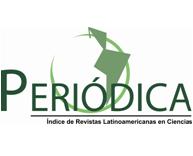USE OF AGROINDUSTRIAL WASTE AS HYDROCARBONS BIOSORBENTS
Keywords:
Wood sawdust, sugar cane bagasse, biosorbents, bisorbent mixtures, hydrocarbon removal, agro-industrial wastesAbstract
Introduction:
Water pollution by hydrocarbons is a worldwide concern due to its environmental and economic impact. Several highly effective synthetic sorbent materials have been developed to control oil spills, but the additional storage or disposal costs are high.
Objective:
To evaluate agro-industrial wastes (sugar cane bagasse and pine sawdust) and their mixtures, as biosorbent materials for the removal of hydrocarbons in water.
Materials and Methods:
Natural bagasse (NB) and pine sawdust (PS) were sieved to obtain a uniform biomass. The studies are carried out with granulometries (+1 -2 mm) and (+0.315 - 1 mm) for NB and PS for the mass percentages and homogeneity of the fractions. Humidity, real density, apparent density, porosity and Scanning Electron Microscopy (SEM) coupled to EDX were determined for the selected material. To determine the maximum sorption capacity (Ca) of NB and PS, diesel (32.7 ºAPI) was used. An experimental design 22 was carried out. Statgraphics Centurion XV.II software was used for statistical analysis.
Results and discussion:
The results obtained show that the highest (Ca) was reached with (+0.315 -1 mm) and 80%NB/20%PS and 50%NB/50%PS mixtures. The results obtained show that the most influential variable on (Ca) is the biosorbent concentration.
Conclusions:
It is concluded that it is possible to use agricultural waste (NB and PS) and their mixtures as biosorbent materials, in non-conventional and sustainable treatments for the removal of hydrocarbons in water.
Downloads
Downloads
Published
How to Cite
Issue
Section
License

This work is licensed under a Creative Commons Attribution-NonCommercial 4.0 International License.




















